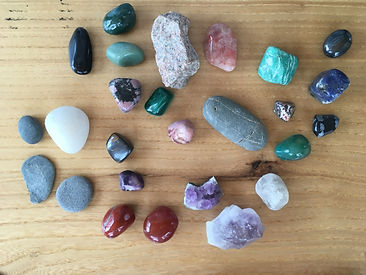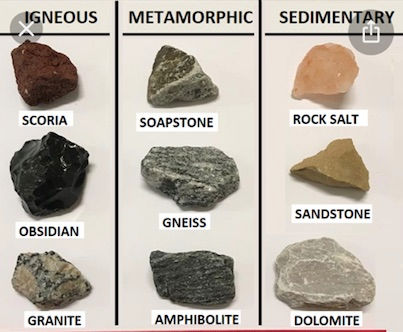
Hello Scientists! SCROLL DOWN FOR MOST RECENT LESSONS
NOTE: due to the new distance learning routines, not all students have had a chance to take a look and try Lessons. Those who are looking for more as we wait a week, look at MONA's guide to Birdwatching and take the quiz! Lessons updated ongoing!
Please Keep a Science notebook either on paper, or on a pages/word document as I will be asking you to share some of your work on Google classroom, but NOT ALL, and therefore you will need to have your data (work) recorded ready to present!
Try your best to do the work. I understand if your new routine is not quite in place yet- or "life gets in the way".
It is MOST important that you ENJOY learning about rocks and minerals, and that you feel like "you got this"!! I am only an email away if you need guidance. I will indicate which activities are OPTIONAL (I will not be asking to see the optional activities).
Lesson #1:
How Do Rocks and Minerals Influence Our Lives?
In this lesson we will use student-centred inquiry-based learning to develop an understanding of where rocks and minerals come from; how they are extracted; the effects on the environment of rock and mineral extraction; and the plethora of products in our surrounding environment that are comprised of rocks and minerals.
First, please read Everybody Needs a Rock by Byrd Taylor (Aladdin Books)
At this website:
https://archive.org/stream/EverybodyNeedsARock-English/everybody-rock_djvu.txt
OR press “READ ME” button if you are unable to access the website and the button will bring you to a document that has the words for the book.)
Optional: Send McB your thoughts on the book (how it made you feel about- ROCKS?) Yes! How did it make you think of rocks- and how they made you feel- about rocks!
Send optional response via email mcbrienm@hdsb.ca or on Google Classroom.
Next Answer the following questions:
(Need help? See Rocks and Minerals Fact sheet)
1. How do rocks and minerals influence our lives? (Always give at least 3 examples in your response!).
Hint: In these answers, try to use examples from your own life. Example answer: I have benefited from rocks and minerals as my house in covered in bricks, which help keep out the cold in the winter. Remember 3 examples!
2. What is the difference between a rock and a mineral?
3. How do we benefit from rocks and minerals?
4. How do humans get the rocks out of the ground for use?
Example of how humans use/benefit from rocks and minerals:
Several quarries are located just north of the GTA.
These quarries supply rock such as granite in a wide variety of colours. In addition to many colours such as black, brown, grey and pink, we occasionally find greens and purples too.
Granite is highly dimensional and contains many interesting and unique colour combinations, or "stripings" such as black with white stripes, grey with pink stripes and so on. Quarries supply granite products such as flagstone, stair treads and armour stone (used for retaining walls) to landscaping contractors, engineers, stone and garden centres and to the general public. Many people even have granite kitchen countertops.
Above button pleas note:
Jill is a member of CAGIS- learn all about it!
Most notably, the mineral fluorrichterite was discovered in Wilberforce Ontario, and is only found in this area of all of Canada. It is a rare mineral of a brownish colour, formed into well-shaped crystals with a pearly lustre from the unusual presence of the element fluorine.
ROCKS ON A WALK
Situated on the Canadian Shield my solo walks are bursting with sights of rocks and minerals. Here are some examples I found on my daily solo walks.

Granite and Gneiss bench

Granite steps
Lesson #3
Read new information, How Diamonds are Formed, watch Bill Nye's lesson on Rocks and Soil to review. Next week we will answer some comprehension questions on Rocks and Minerals.

My collection of stones!

Above, see the difference between "raw" and polished (or tumbled) stone? The amethyst comes from a "geode"!
(Geodes are spherical to subspherical rock structures with an internal cavity lined with mineral materials. Meaning they are round-ish, with a cool inside and a protective outer layer made up of minerals.)

Identifying Local Rocks and Gemstones
I took a walk and found these small stones (above photo) that I am guessing are from the area. I was near a quarry, so I think my guess is a fairly sound “hypothesis”.
In the photo, they are placed on my counter which is a home-made granite/epoxy project done by the person who owned the house before me! I can hypothesize (guess based on my research and thinking) that he got the granite from the local quarry.
Help me identify them!

CONTEST!!

Congratulations OWEN!! He was the FIRST person to identify the stones in my semi precious stone collection (match numbers in the gem photo to letters on the reference page) So, I introduce to you,
THE OWEN DIAMOND!

